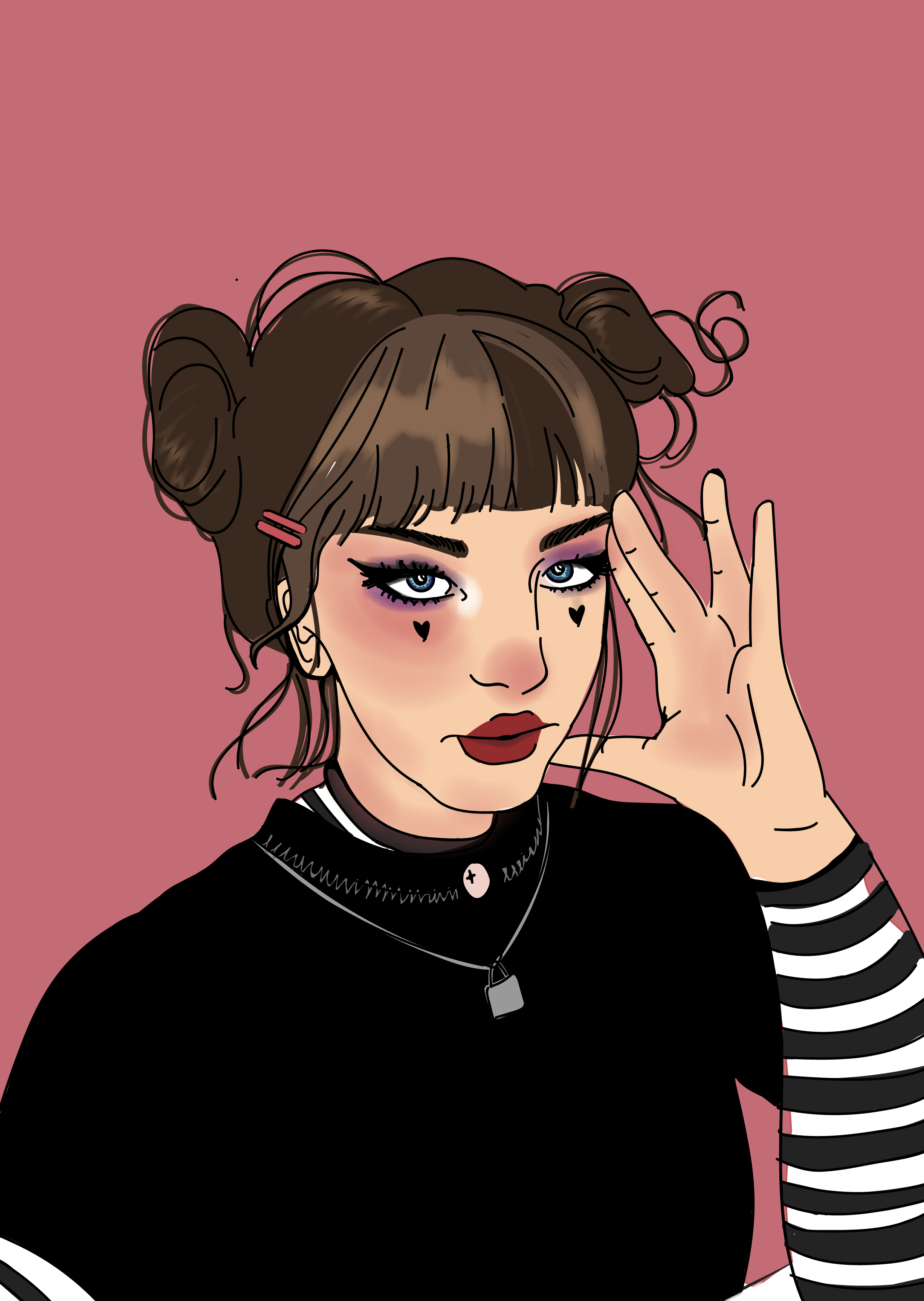[Words by Charlotte Macchi Watts (she/her)]
[Photo by Higor Hanschen on Unsplash]
Content Warning: Abuse, Paedophilia, Depiction of Pornography, Mental Illness
This time, the focus is on e-girls: an online clan distinguished by their anime-inspired, bubblegum pink, choker-wearing aesthetic. Like its ancestral subcultures, e-girl culture bases itself around a collective look, which in the 21st century looks like a marriage of chunky Doc Martens and blusher on the nose. The term (often used derogatorily) can be stretched to refer to any womxn with a strong online following, but Tiktok has paved the way for the newest branch of baby-faced e-girls to move into the mainstream.
Just like everything on the internet, e-girls became politicised as soon as they surfaced – not just for their counterculture foundation, but for the sense of community they’ve created for young womxn. As I watch a video of e-girls peacefully drowning out the sound of a homophobic preacher on Buchanan Street, I wonder how the term ever really came to connote negativity. Then a quick search on Google tells me everything I need to know: it was created by men. Thinking about the disparity between e-girls and the type of people who slander them makes their bubblegum sweetness quickly turn sour. As the popularity of the term grows, the e-girl ideal has morphed into a childlike aesthetic that arguably glamorises perversion. When we consider the implications of this, can we really brush over our uneasiness with a bit of blusher?
The concept of an e-girl becomes problematic when we delve further into understanding the baby-face masquerade. E-girls are synonymous with the expression ‘I’m baby’ – the way they typically look, act, and speak exaggerates youthful characteristics. As the popularity of the term grows, so does the fetishization of childlike attributes. I couldn’t help but wince when I drew the comparison between the perverted beauty standards for womxn in porn, and the e-girl persona: helpless, hairless, and childlike. As Vox discusses, the e-girl identity echoes characteristics of the Daddy Dom Little Girl (DDLG) kink – where the womxn plays the role of a dependent young girl whilst the other is the caregiver. Between consenting adults, engaging in these sorts of roleplays is perfectly acceptable, but as these once-radical kinks are absorbed into the mainstream, users of all ages are exposed to this content. When underage creators then wear harnesses typical of BDSM and have masses of engagement, it feeds into the normalisation of sexualising minors. In an ideal world, dressing up in costume would be purely for enjoyment, but the internet finds a way to pervert absolutely anything – especially if it’s a womxn. An online phenomenon like this one exists to be corrupted.
It is important to reiterate that a womxn’s body is hers to own and express, and that enjoying kinks, costumes, or anything of the sort, should not be shameful. It is when the production of this sort of content promotes a childlike beauty standard, that it becomes extremely problematic. There is often an uncomfortable disjointedness between creators and those who consume content, giving predatory eyes a chance to prey on their innocence. The e-girl personality wades into an ambiguous, and frankly dangerous, ageless territory, where anyone from underage children to grown adults can cosplay for a day.
Reminiscent of the days of Tumblr, where users found a way to romanticise just about anything, some e-girls have also taken to Tiktok to glamorise facets of their personal life – above all, mental health. The ‘manic pixie dream girl’ (MPDG) personality is the newest ‘subcategory’ of e-girl, evolving on Tiktok from the fictional character type seen in films (think Ramona Flowers). A quick search on Urban Dictionary defines this personality as – unsurprisingly – a helpless, whimsical, womxn who exists to guide and teach males, without ever gaining anything herself. This stock character, which pervades our phone screens as well as everything else, perpetuates a dangerous stereotype of a womxn as being nothing more than a pretty face and an emotional dumping ground. Of course, there can be exceptions, but in my own personal experience MPDGs tend to explore traumatic content. As a result, this self-deprecating persona normalises processing others’ emotions before our own. We all have our ways of coping, and in a lot of cases these can be to turn to our phone screens, but not everyone is able to process their worries in the same desensitised, sarcastic manner that we see on social media. Painting an elaborate face of makeup and dancing for fifteen seconds may well be a way to cope and engage with others, but one size of Doc Martens does not fit all.
For all its downfalls, it is important to consider the merits of online communities. Whilst Tiktok might not give us free therapy, it does give us the (unconventional) tools to seek the help and support we need. Doing a bite-sized dance routine for millions of viewers is anything but scary when you’re armed with a shield of pastel hair and heavy eyeliner. After all, the internet is a space where all of us can find refuge and community, and the same goes for e-girls. For some people, creating a character and a safe space is a necessity – one that exists online and acts as a barrier between them and the daunting world outside. When I watch these e-girls, all I really see is young people enjoying themselves and unwittingly evolving communities online. More often than not, these creators are just young adults doing what they should be doing – loving and expressing themselves.
(Vox: https://www.vox.com/the-goods/2019/8/1/20748707/egirl-definition-what-is-an-eboy)


Really interesting article! Kudos